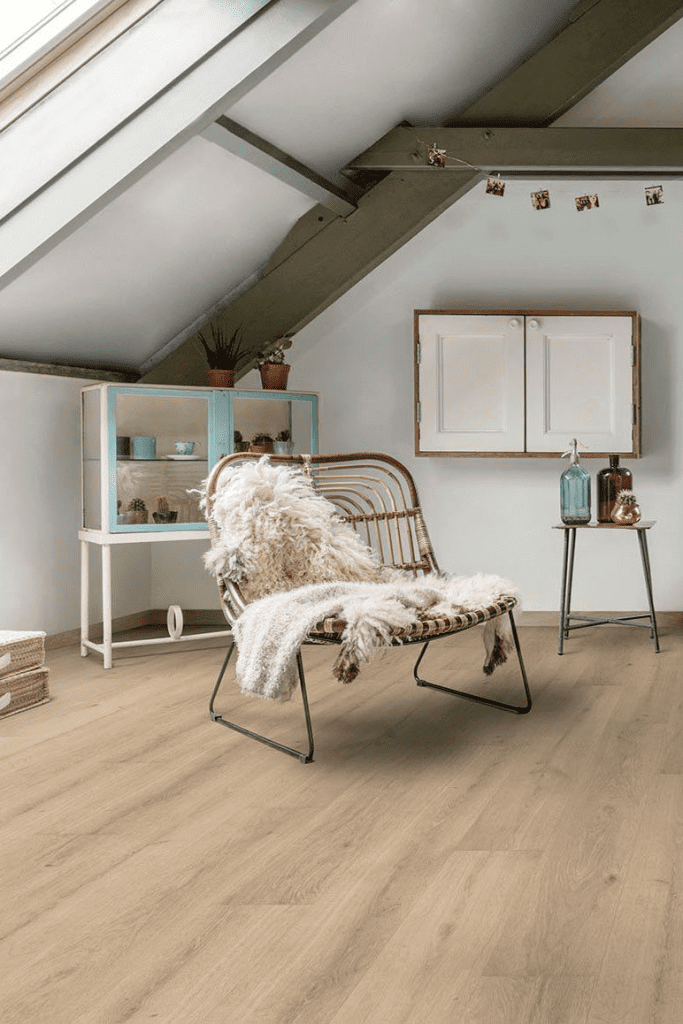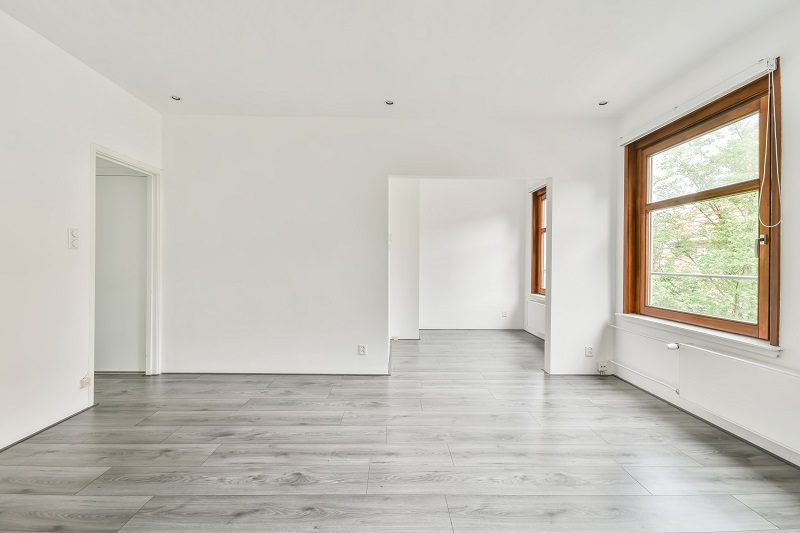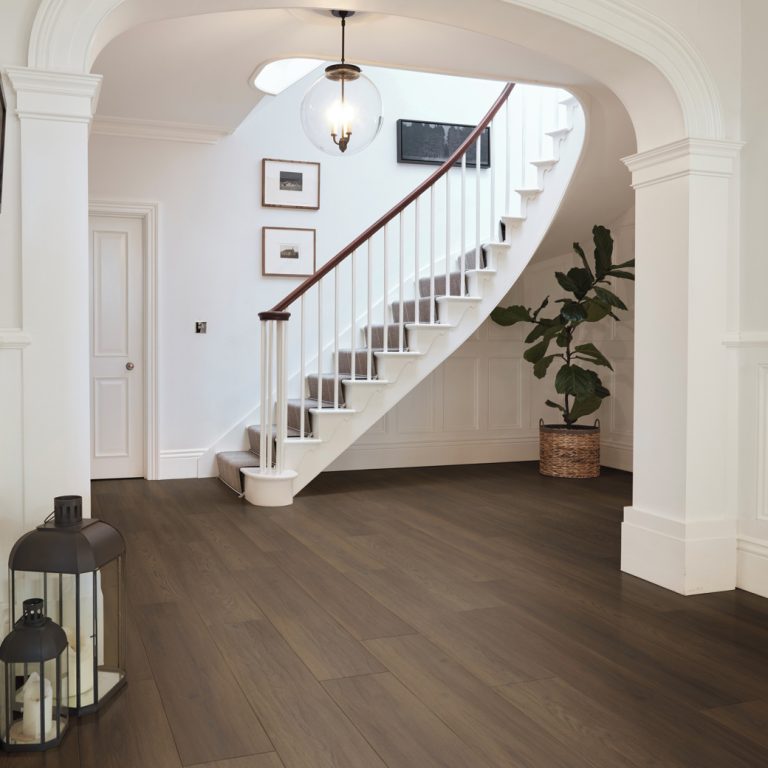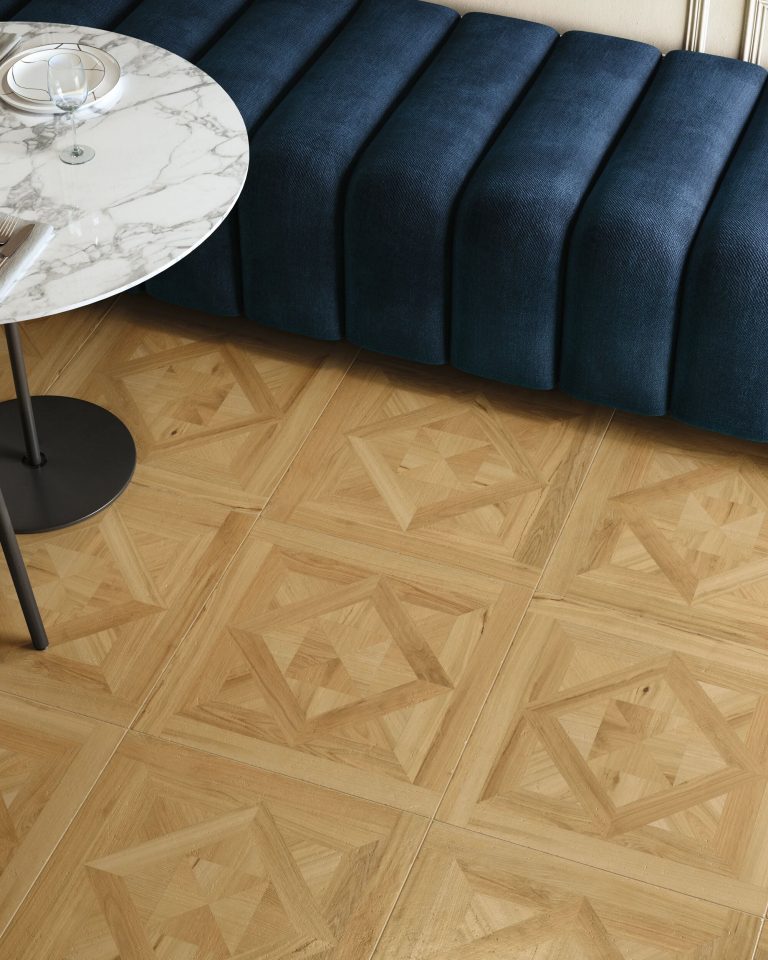If you’re considering tile flooring for your home, you might be wondering about the different types available and how to find the most affordable tile flooring option. From ceramic and porcelain to natural stone and vinyl, there are plenty of choices to consider.
In this article, we’ll explore the various types of tile flooring, the factors that affect the cost, and how to save money on your tile flooring project. Whether you’re on a budget or simply looking for the best value, we’ve got you covered.
What is Tile Flooring?
Tile flooring is a durable and versatile option, available in materials like ceramic and vinyl to match different design and functional needs. Known for its resilience, it withstands heavy foot traffic, resists moisture, and requires minimal maintenance, making it ideal for kitchens, bathrooms, and entryways. Ceramic tiles offer timeless designs with various colours and patterns, while vinyl provides a budget-friendly, water-resistant alternative. While Luxury Vinyl Tiles (LVT) mimic natural materials while ensuring easy installation and upkeep.
Types of Tile Flooring
Tile flooring comes in various options, each with unique characteristics: ceramic, porcelain, natural stone, vinyl, and linoleum.
- Linoleum Tile: An eco-friendly flooring choice made from natural materials, linoleum is antibacterial, resilient, and available in vibrant designs. Its sustainability and durability make it a great long-term investment.
- Ceramic Tile: Durable and versatile, ceramic tiles are available in various finishes—glossy, matte, or textured—offering resistance to stains and scratches. Ideal for high-traffic areas, they come in a wide range of colours and patterns.
- Porcelain Tile: Highly durable and water-resistant, porcelain tiles are perfect for moisture-prone areas like bathrooms, kitchens, and patios. Their compact composition ensures longevity with minimal maintenance.
- Natural Stone Tile: Available in marble, terrazzo, limestone, travertine, and granite, natural stone tiles offer elegance and unique textures. While beautiful, they require proper sealing to maintain durability.
- Luxury Vinyl Tile: A budget-friendly and easy-to-install option, vinyl tiles resist moisture and work well with underfloor heating. They mimic the look of wood or stone at a lower cost.
7 Affordable Tile Flooring for your House
For those seeking the most affordable tile flooring options vinyl tile stand out as cost-effective choices that offer durability, visual appeal, and ease of maintenance. Here are our recommended products.
1. Camaro Wood Bayswater Oak

Camaro Wood Bayswater Oak is a premium luxury vinyl tile (LVT) designed to replicate the natural warmth and elegance of real wood while offering enhanced durability and practicality. Featuring an authentic wood grain texture and a timeless oak finish, this flooring is ideal for both residential and light commercial spaces. With a 2mm thickness and a 0.3mm wear layer, it provides excellent resilience against daily wear, moisture, and foot traffic. Its surface ensures easy maintenance, while compatibility with underfloor heating adds to its comfort. Designed for glue-down installation, Bayswater Oak combines classic aesthetics with modern performance, making it a stylish and long-lasting flooring solution.
Price : £19.19 /m² — ON SALE
See product : BUY HERE
2. Camaro Wood Astoria Oak

Camaro Wood Astoria Oak is a luxury vinyl tile that emulates the natural beauty of oak, offering a sophisticated and durable flooring solution. Designed for residential and light commercial interiors, it features a 2.0mm thickness with a 0.3mm wear layer, ensuring resilience and longevity. The tile’s polyurethane reinforcement (PUR) facilitates easy maintenance and enhances its aesthetic appeal. With a plank size of 184.2mm x 1219.2mm, Astoria Oak provides an authentic wood effect with a micro bevel edge and high shade variation, adding depth and character to any space
Price : £19.19 /m² — ON SALE
See product : BUY HERE
3. Camaro Wood Naked Blond Oak

Camaro Wood Naked Blond Oak presents a beautifully natural aesthetic with its soft, light oak tones and subtle wood grain detailing. Designed to bring warmth and elegance to any space, this luxury vinyl flooring offers the perfect balance of style and practicality. Its durable and easy-to-maintain surface makes it an ideal choice for both residential and commercial interiors, ensuring long-lasting performance while enhancing the charm of contemporary and classic décors alike.
Price : £19.19 /m² — ON SALE
See product : BUY HERE
4. Luvanto Design White Oak

Luvanto Design White Oak brings timeless elegance to any space with its sophisticated woodgrain texture and natural oak tones. Designed for both style and durability, this luxury vinyl flooring offers exceptional water resistance and a hard-wearing surface, making it ideal for kitchens, living areas, and commercial spaces. Its realistic finish beautifully replicates natural wood while ensuring easy maintenance and long-lasting performance. Perfect for modern and classic interiors alike, Luvanto Design White Oak combines aesthetic appeal with practical benefits for a stunning flooring solution.
Price : £31.99 /m²
See product : BUY HERE
5. Karndean Knight Tile White Painted Oak

Karndean’s Knight Tile White Painted Oak luxury vinyl flooring features distressed white-painted oak planks with beige undertones, offering a “lived-in” modern traditional or country aesthetic. Measuring 915mm x 152mm with a 0.3mm wear layer, these planks are durable, water-resistant, and compatible with underfloor heating. The gluedown format ensures a secure fit, making it ideal for various rooms, including kitchens, bathrooms, and hallways.
Price : £31.99 /m²
See product : BUY HERE
6. Floorify Planks Crémant

Floorify’s Crémant Planks offer a sophisticated flooring solution that combines elegance with practicality. Measuring 1219 mm in length, 178 mm in width, and 4 mm in thickness, these planks feature a subtle beige tone with a cool undertone, enhanced by a lightly brushed wood texture and matte finish for a natural wood appearance. Their robust rigid core ensures exceptional durability, making them suitable for high-traffic areas, while their 100% waterproof nature allows seamless installation across various spaces, including bathrooms and kitchens. The user-friendly click system facilitates straightforward installation, and maintenance is minimal, requiring only regular vacuuming and mopping to preserve their pristine condition.
Price : £39.95 /m²
See product : BUY HERE
7. Karndean Knight Tile Honed Oyster Slate

Karndean Knight Tile Honed Oyster Slate offers a refined and elegant flooring solution, combining the natural beauty of slate with the durability of luxury vinyl. Featuring soft, neutral tones and a subtle honed finish, this versatile tile complements both classic and contemporary interiors. Its realistic texture and intricate detailing create a sophisticated yet practical surface, perfect for high-traffic areas in both residential and commercial spaces. Easy to install and maintain, this water-resistant flooring delivers long-lasting performance while enhancing any space with its timeless appeal.
Price : £31.99 /m²
See product : BUY HERE
8. Luvanto Click Plus Urban Grey

Luvanto Click Plus Urban Grey offers a stylish and contemporary flooring solution with the perfect blend of durability and sophistication. Featuring a realistic wood-effect finish in a modern grey tone, this luxury vinyl flooring is designed for effortless installation with its click-lock system, making it ideal for both residential and commercial spaces. Its water-resistant and scratch-resistant properties ensure long-lasting performance, while the textured surface adds a natural feel underfoot. Whether for a sleek minimalist aesthetic or a cosy industrial vibe, Urban Grey delivers versatility and practicality without compromising on style.
Price : £39.99 /m²
See product : BUY HERE
Factors Affecting the Cost of Tile Flooring
Several factors influence tile flooring costs, including material, tile size and shape, installation method, and additional features.
1. Material
Different materials have varying price points and maintenance needs. Ceramic and vinyl are budget-friendly, while marble and natural stone are more expensive due to their luxurious appeal and complex installation. Durability also impacts cost—ceramic is resilient, while wood floors require more upkeep.
2. Tile Size & Shape
Larger tiles reduce installation time but may cost more per piece. Smaller tiles or intricate patterns require more labor, increasing expenses. Custom designs add to both material and installation costs.
3. Installation Method
DIY may seem cost-effective but requires tools and expertise, while professional installation ensures quality but adds labor costs. TEKA Flooring offers professional fitting services with quality checks for customer satisfaction.
4. Additional Features
Underfloor heating, custom designs, unique grout colors, and textured finishes increase overall costs due to specialized materials and labor.
How to Save Money on Tile Flooring
Saving on tile flooring is possible by comparing prices, considering DIY installation, leveraging sales, opting for simple designs, and buying in bulk.
- Compare Prices: Check multiple retailers, both online and in-store, to find the best deals and special discounts.
- DIY Installation: Installing tiles yourself can cut labour costs significantly, with tutorials and tools readily available.
- Look for Sales & Promotions: Watch for seasonal sales, clearance offers, and limited-time deals to get quality tiles at lower prices.
- Choose a Simple Design: Minimalist patterns are budget-friendly, timeless, and easy to maintain.
- Buy in Bulk: Purchasing in large quantities or through wholesale channels often results in discounts and cost savings.
By applying these strategies, you can achieve stylish, high-quality tile flooring while staying within budget.
If you’re considering vinyl tiles for your home flooring, you can choose from various luxury vinyl tile products from TEKA Flooring. Whether you prefer the look of hardwood, stone, or unique patterns, there are numerous options in TEKA Flooring that are available to complement any interior style. Let’s contact us, now!
Read also: 6 Vinyl Flooring Ideas For Small Bathrooms

































